#Effective audience segmentation Google Ads
Explore tagged Tumblr posts
Text
Demographic Targeting in Google Ads: Best Practices

What is Demographic Targeting in Google Ads?
Demographic targeting in Google Ads enables advertisers to segment their audience based on:
Age: Grouping users into age brackets like 18–24, 25–34, and so on.
Gender: Male, female, or unknown.
Parental Status: Differentiating between parents and non-parents.
Household Income: Dividing users into income percentiles (top 10%, 11–20%, etc.).
This data helps brands craft tailored messages that appeal to specific audience segments, enhancing engagement and driving conversions.
Why Demographic Targeting Matters in 2024
Precision in Ad Spend: With rising competition in PPC, it’s crucial to allocate your budget effectively. Demographic targeting ensures you’re not wasting ad spend on irrelevant users.
Improved Engagement Rates: Ads designed for a specific demographic are more likely to generate clicks, increasing Google Ads ROI.
Enhanced Relevance: Targeting demographics makes ads more relevant, leading to higher Quality Scores and better ad placements.
Customization at Scale: Through audience segmentation in Google Ads, you can personalize ads for different demographics without losing scalability.
Best Practices for Google Ads Demographic Targeting in 2024
1. Combine Demographic Targeting with Audience Insights
While demographic targeting provides broad data, combining it with audience insights, such as interests or purchasing behaviors, ensures highly effective segmentation. For example, targeting “Females aged 25–34 interested in fitness” for a health supplement ad is far more precise than targeting just “Females aged 25–34.”
2. Monitor and Adjust Regularly
Demographics and user behaviors evolve, especially with trends and technological changes. Continuously analyze campaign performance metrics like CTR, impressions, and conversion rates to optimize your Google Ads demographics settings.
3. Layer with Other Targeting Options
Maximize effectiveness by layering demographic targeting with options like location or device targeting. For instance, as a PPC services provider in Pune, targeting “Males aged 25–34 in Pune using mobile devices” for a tech gadget campaign can yield better results than broader targeting.
4. Exclude Irrelevant Demographics
Exclusion is as important as targeting. If your product appeals only to adults, exclude age groups under 18 to prevent wasted impressions and clicks.
5. Align Ad Creatives with Demographics
Ensure your visuals and copy resonate with the target group. A professional, authoritative tone may appeal to high-income demographics, while a casual, fun tone might work for younger audiences.
6. Use Demographics for Remarketing
Segment users by demographics for retargeting campaigns. For example, retarget parents who abandoned their shopping carts with ads showcasing family-friendly benefits of your product.
Mistakes to Avoid in Google Ads Demographic Targeting
1. Over-Reliance on Demographics
While demographics are useful, they’re not the sole indicator of purchasing intent. Complement demographic targeting with keyword optimization, placement targeting, and remarketing to broaden your reach.
2. Ignoring Data Discrepancies
Demographic data in Google Ads might not always be 100% accurate. Regularly compare it with analytics tools to minimize inaccuracies.
3. Neglecting Smaller Demographics
While large demographic groups may yield higher impressions, niche groups can often provide higher conversions due to lower competition.
Key Metrics to Track for Success
To ensure you’re optimizing Google Ads demographics effectively, monitor the following:
CTR (Click-Through Rate): Indicates ad relevance to the targeted demographic.
Conversion Rates: Shows whether the targeted group is completing desired actions.
Cost Per Conversion (CPC): Helps determine ROI for each demographic.
Future Trends in Google Ads Demographic Targeting for 2024
AI-Driven Insights: Google’s machine learning algorithms are becoming more sophisticated, offering deeper insights into audience behaviors.
Integration with First-Party Data: Brands leveraging first-party customer data can refine demographic targeting for better personalization.
Dynamic Ad Customization: Expect more tools for auto-generating ad creatives tailored to specific demographic groups.
How Digital Rhetoric Can Help
As a trusted PPC services provider in Pune, we specialize in crafting data-driven campaigns for businesses across industries. Our expertise in Google Ads demographic targeting ensures your ad spend delivers maximum ROI.
Explore our PPC services in Pune by visiting Digital Rhetoric. Let’s work together to harness the power of demographic targeting and achieve unparalleled ad performance.
#PPC services in Pune#PPC services#Google Ads demographic targeting 2024#Effective audience segmentation Google Ads#Optimize Google Ads demographics
0 notes
Text
Mastering Digital Marketing Strategies: Boosting Your Business's Online Presence
In today's highly competitive digital landscape, having a well-defined marketing strategy is crucial for businesses aiming to thrive online. Effective digital marketing strategies can enhance brand visibility, attract targeted audiences, and drive conversion rates. This article will explore critical digital marketing strategies and provide insights on optimizing your online presence for maximum success. Get ready to master the art of digital marketing and elevate your business to new heights.
Keyword Research: The Foundation of SEO
One of the cornerstones of a successful digital marketing strategy is search engine optimization (SEO). Conduct thorough keyword research to identify relevant search terms related to your business. Use tools like Google Keyword Planner, SEMrush, or Moz to find keywords with high search volume and low competition. Incorporate these keywords strategically throughout your website, content, and metadata to improve your organic search rankings and attract targeted traffic.
Engaging Content Creation
Content remains king in the digital realm. Craft high-quality, engaging content that provides value to your target audience. Develop a content calendar to ensure consistent delivery across various channels, including blog posts, articles, videos, infographics, and social media posts. Use your keywords naturally within your content to optimize for users and search engines. Share your content on relevant platforms, and encourage social sharing to increase visibility and generate organic traffic.
Social Media Marketing
Leverage the power of social media platforms to expand your brand's reach and engage with your target audience. Identify the platforms where your audience is most active and create compelling profiles. Share valuable content, interact with followers, and participate in relevant conversations. Utilize social media advertising options to amplify your message and target specific demographics. Regularly analyze the performance of your social media efforts to optimize your strategy and maximize results.
Email Marketing Campaigns
Email marketing remains a highly effective tool for nurturing leads and converting them into customers. Build an email list by offering valuable incentives, such as exclusive content or discounts. Segment your email list based on demographics, interests, or previous interactions to deliver personalized and relevant content. Craft compelling email campaigns with attention-grabbing subject lines and visually appealing designs. Monitor and analyze email metrics to refine your approach and improve conversion rates.
Influencer Partnerships
Collaborating with influencers in your industry can significantly boost your brand's visibility and credibility. Identify influencers whose values align with your brand and whose audience matches your target market. Contact them for partnerships, such as sponsored posts or product reviews. Ensure that the collaboration feels authentic and provides value to its audience. Track the results of influencer campaigns to gauge their effectiveness and adjust your approach as needed.
Pay-Per-Click (PPC) Advertising
PPC advertising allows you to reach your target audience through ads displayed on search engines and other platforms. Conduct thorough keyword research to identify relevant keywords for your campaigns. Create compelling ad copy and utilize captivating visuals to attract clicks. Set clear goals, monitor the performance of your campaigns, and make data-driven optimizations to maximize your return on investment.
Website Optimization and User Experience
A user-friendly website that offers a seamless experience is essential for retaining visitors and driving conversions. Optimize your website's loading speed, mobile responsiveness, and navigation. Ensure your website communicates your value proposition, features intuitive design, and includes clear calls to action. Regularly test and analyze your website's user behavior to identify improvement areas and increase conversion rates.
Conclusion
By implementing these digital marketing strategies, you can significantly enhance your business's online presence, attract targeted audiences, and drive conversions. Remember to conduct thorough keyword research, create engaging content, leverage social media, utilize email marketing, collaborate with influencers, implement PPC advertising, and optimize your website for a seamless user experience. Consistency, analysis, and adaptation are essential to mastering digital marketing.
2 notes
·
View notes
Text
Unlock Business Growth with Expert PPC Advertising – Webpromix Solutions That Deliver Results

In the fast-moving digital landscape, businesses need smart, strategic marketing solutions to stay competitive and grow rapidly. One of the most effective methods to drive immediate traffic and measurable ROI is through PPC advertising. At Webpromix, we specialize in delivering high-performing pay per click PPC advertising campaigns tailored to your business goals.
What is PPC Advertising?
PPC advertising, or pay per click advertising, is a model of internet marketing where advertisers pay a fee each time their ad is clicked. It’s a powerful way to buy visits to your website, rather than earning them organically through SEO alone.
When done right, PPC ads can bring in qualified traffic, generate high-converting leads, and significantly boost your sales. From Google Ads to social media platforms, PPC advertising helps you target the right audience at the right time.
Why Choose PPC Advertising for Your Business?
Businesses of all sizes benefit from pay per click advertising due to its ability to deliver instant results. Here’s why PPC ads are essential:
Instant Visibility: Get your business in front of users who are actively searching for your products or services.
Highly Targeted Campaigns: Reach audiences by location, device, keyword, age, interests, and more.
Budget Control: Set your own daily or monthly limits, ensuring you never overspend.
Measurable Performance: Track every click, impression, and conversion in real-time.
Scalable Growth: Increase your ad spend only when you're getting profitable results.
At Webpromix, we leverage all these benefits to build data-driven PPC campaigns that fuel sustainable business growth.
Our Approach to PPC Advertising at Webpromix
Creating a successful PPC advertising strategy requires more than just launching a few ads. At Webpromix, we follow a structured approach that ensures your investment delivers real, measurable results.
1. In-Depth Market and Keyword Research
We identify the most profitable keywords and audience segments relevant to your business. This ensures your pay per click ads are shown to users most likely to convert.
2. Compelling PPC Ad Creation
Our team of copywriters and designers craft eye-catching, persuasive PPC ads that grab attention and drive clicks. Every ad is tailored to reflect your brand and offer.
3. Landing Page Optimization
We ensure that every visitor who clicks on your ad is directed to a highly optimized landing page that increases the chances of conversion.
4. Smart Bid Management and Budget Allocation
We manage your bids effectively to get maximum exposure at the lowest cost possible. This includes A/B testing and real-time adjustments to your PPC campaign.
5. Ongoing Campaign Optimization
We don’t just set and forget. Our team constantly monitors performance and optimizes your PPC advertising campaigns to ensure ongoing success and growth.
Platforms We Support for PPC Advertising
At Webpromix, we manage pay per click PPC advertising across all major platforms, including:
Google Ads
Bing Ads
Facebook and Instagram Ads
LinkedIn Ads
YouTube Ads
Each platform is strategically chosen based on your industry, goals, and target audience to maximize ROI.
Why Webpromix is Your Trusted PPC Partner
With years of experience managing successful PPC campaigns, Webpromix is your go-to agency for all things related to PPC advertising. Here’s what sets us apart:
Certified PPC professionals
Custom strategies tailored to your goals
Transparent reporting and analytics
End-to-end campaign management
Continuous improvement based on data and trends
We don’t just manage ads—we help businesses grow.
Conclusion: Start Your PPC Advertising Journey with Webpromix
If you want to grow your business, increase leads, and boost your online presence, PPC advertising is a powerful tool to achieve those goals. With Webpromix by your side, you get more than just clicks—you get results.
✅ Ready to launch your PPC campaign? 👉 Visit Webpromix.com today and discover how our expert team can build a high-converting pay per click strategy tailored to your success.
#pay per click PPC advertising#pay per click#pay per click advertising#PPC ads#PPC campaign#PPC advertising
2 notes
·
View notes
Text

Whew! We can all relax guys.
If 10 different mainstream media outlets (likely distributed by a company, owned by a company that's a subsidiary of a company, owned by another company that's under the umbrella company owned by Rupert Murdoch,) all report the same sketchy story, it's "probably true."
It's not like all major news sources have all mis-reported the amount of water we are supposed to drink a day at least once based on a faulty study from the 1940s. Or done entire segments based on the "people only use ten percent of their brain" myth that goes back to the 1900s. Or that those same outlets failed to report actual studies done by the fossil fuel companies that uncovered evidence of man-made climate change. Or the equally damaging details about the effects of smoking, an industry that often sponsored both print and television news outlets at one point.
But if they all say it, or don't say it, then we can take that as being correct information, right?
Lily has a few posts on this topic, and I'm comfortable in saying that in my opinion, she's right about two things. The first is that if you are getting all your information from youtube, or tiktok, or twitter, or here or any other social media, then it's likely to be biased in some way if only because it's passing through another person with even less oversight than an actual news agency. This goes double for edutainment programs from pundits like Ben Shapiro or Matt Walsh who have agendas in what they report and how they report it. And yes, to be "fair and balanced" this goes for Rachel Maddow, et al, too.
Which means, the second thing Lily is right about is that you still have to watch/read the news. You just have to be willing to fact check anything you are unsure about. If something sounds off, or sketchy, or you can see how it may be something being reported with a political bias, or seems to be confirming a bias, even one you share, you may have to look into it. Especially if it falls into the "too good to be true" or "big lie (why would anyone say something so crazy, that has to be true)" categories.
You can easily search the claims with the word fact check added to see what the discussions about it are. For example, 8 glasses of water a day fact check. Even Google's AI slop has that one right.
As to what news to use...well there are organizations and websites dedicated to finding which news agencies have the best ratings. Aside from that, your local news broadcast is usually more accurate and reliable than the national ones. There is still an agenda at times, but just because they can operate a little slower and a little more under the radar, they are usually a little more trustworthy. Also, they're closer in proximity to their audience, and need to keep up a good reputation for their ratings.
Personally, I find print media a bit more likely to be accurate. That may just be a bias on my part, though. I think by reading it myself rather than having someone read it to me and putting their spin on it, I do a better job making up my own mind.
3 notes
·
View notes
Text
How to Start a Profitable AI-Powered Etsy Shop
Did you know that Etsy sellers who leverage AI tools can increase their sales by up to 30%? That’s not just a number; it’s a game-changer for anyone looking to start a profitable Etsy shop. If you’re ready to dive into the world of AI-powered creativity, buckle up! We’re about to explore how to turn your artistic flair into a thriving business. Understanding the AI Advantage AI isn’t just for tech giants anymore. It’s your new best friend in the Etsy marketplace. Think of AI as your personal assistant, tirelessly working behind the scenes. Here’s how it can help: Market Research: AI tools can analyze trends and customer preferences. This means you can create products that people actually want. SEO Optimization: Use AI to find the best keywords for your listings. This boosts your visibility and attracts more buyers. Design Assistance: AI can help generate unique designs or suggest color palettes that resonate with your target audience. Choosing Your Niche Wisely Finding the right niche is like picking the perfect avocado—too hard, and it’s not ready; too soft, and it’s overripe. You want that sweet spot! Here’s how to find it: Passion Meets Demand: Choose something you love but also check if there’s a market for it. Use tools like Google Trends to gauge interest. Analyze Competitors: Look at successful shops in your niche. What are they doing right? What gaps can you fill? Test the Waters: Start with a small batch of products. See what sells before going all in. start a high job ai job Creating Stunning Listings Your product listings are your storefront. Make them shine! Here’s how: High-Quality Photos: Invest in good photography. Use natural light and showcase your products from multiple angles. Compelling Descriptions: Write engaging descriptions that tell a story. Highlight the benefits and unique features of your products. SEO-Friendly Titles: Use relevant keywords in your titles. This helps your products show up in search results. Leveraging AI Tools for Marketing Marketing can feel like shouting into a void. But with AI, you can target your audience more effectively. Here’s how: Social Media Automation: Use AI tools to schedule posts and analyze engagement. This saves time and maximizes reach. Email Marketing: AI can help segment your audience and personalize emails. This increases open rates and conversions. Ad Targeting: Use AI to optimize your ad spend. It can analyze which demographics respond best to your products. Customer Engagement and Retention Once you have customers, keeping them is key. Think of it as nurturing a plant; it needs care to thrive. Here’s how to engage your customers: Personalized Communication: Use AI to send personalized messages based on customer behavior. This makes them feel valued. Feedback Loops: Encourage reviews and feedback. Use AI to analyze this data for continuous improvement. Loyalty Programs: Implement AI-driven loyalty programs that reward repeat customers. This keeps them coming back for more. Scaling Your Business with AI Once you’ve got the basics down, it’s time to scale. Think of it as upgrading from a bicycle to a motorcycle. Here’s how to rev up your business: Inventory Management: Use AI tools to predict demand and manage inventory efficiently. This reduces waste and maximizes profits. Outsource Production: Consider using print-on-demand services or outsourcing production to keep up with demand without overextending yourself. Expand Your Product Line: Use AI insights to identify new product opportunities based on customer preferences. Final Thoughts Starting a profitable AI-powered Etsy shop is not just a dream; it’s a tangible goal. By leveraging AI tools, choosing the right niche, and engaging with your customers, you can create a thriving business. Remember, the key is to stay adaptable and keep learning. The Etsy marketplace is ever-evolving, and so should you! via https://ift.tt/546VwJj
2 notes
·
View notes
Text
How to Get More Leads as a Roofer
As a roofing contractor, you know the importance of consistent leads to grow your business. While traditional methods like door-knocking can be effective, plenty of modern strategies can generate high-quality roofing leads without the hassle of canvassing. In this article, we'll explore various methods you can employ to attract potential customers to your roofing services and how Lastime Exteriors can help you succeed.
Understand Your Roofing Lead
To begin with, it's essential to understand what a roofing lead is. Simply put, a roofing lead is a prospect who expresses interest in your services and provides their contact information through a form, phone call, or face-to-face interaction. These leads can be segmented into residential and commercial categories, and focusing on quality over quantity is vital. High-quality leads—genuinely interested in your services—are more likely to convert into paying customers.
Optimize Your Online Presence
In today’s digital world, having a robust online presence is non-negotiable. Here are a few key steps to optimize your online visibility:
Create a User-Friendly Website: Your website should be easy to navigate, visually appealing, and mobile-friendly. Include clear calls to action (CTAs) and contact forms to help convert visitors into leads.
Leverage SEO: Invest time in search engine optimization. By targeting relevant keywords related to roofing services, you’ll increase your chances of appearing in search results when potential customers are looking for roofing contractors like Lastime Exteriors.
Content Marketing: Write articles, blog posts, and guides that provide value to your audience. Topics could range from roofing maintenance tips to the benefits of different roofing materials. This establishes you as an authority in the field and helps attract organic traffic to your website.
Utilize Paid Advertising
Paid advertising can significantly boost your visibility and generate leads quickly. Here’s how you can effectively use this strategy:
Google Ads: Running targeted Google ads can put your services in front of people who are actively searching for roofing solutions. You can use specific keywords to reach your desired audience and drive them to your website.
Facebook Ads: Facebook provides robust targeting options to reach specific demographics. You can tailor ads based on location, age, interests, and more, ensuring you attract the right people to your services.
Engage on Social Media
Social media isn't just for sharing photos; it’s a powerful tool for lead generation. Here are some ways to make the most of your social media presence:
Showcase Your Work: Regularly post images and videos of completed projects. Before-and-after shots can be particularly effective in demonstrating your skills.
Engage with Your Audience: Respond to comments and messages promptly. Building relationships with potential customers can help convert leads into actual sales.
Run Promotions: Offer special deals or discounts for followers. This encourages people to share your posts, expanding your reach and potentially generating more leads.
Offer Valuable Freebies
People love getting something for free, and you can leverage this to generate leads. Consider offering:
Free Consultations: Invite prospects to schedule a no-obligation consultation call. Use this time to understand their needs and showcase your expertise.
Free Roof Inspections: A free inspection can entice homeowners to contact you. It allows you to demonstrate the value of your services and potentially identify issues they weren’t aware of.
Free Estimates: Offer free estimates for roofing projects to encourage potential customers to take the first step.
Email Marketing
Once you've generated leads, nurturing them through effective email marketing is essential. Here’s how to do it:
Segment Your List: Organize your leads based on relevant categories, such as residential vs. commercial or types of roofing services they are interested in. This allows for targeted messaging.
Send Personalized Content: Create email campaigns catering to your leads' interests. For example, if you recently completed storm damage repairs, send a targeted email to leads in affected areas.
Follow-Up: Don’t be afraid to follow up with leads who haven't responded. A simple reminder can go a long way in keeping your services top of mind.
Buy Leads Lists Cautiously
While purchasing leads lists from marketplaces like AngelList or HomeAdvisor can be tempting, there are pros and cons. Shared leads, accessible to multiple companies, typically have lower conversion rates. If you decide to go down this route, ensure you invest in high-quality lists and remember that nurturing these leads is essential.
Track and Analyze Your Efforts
To grow your roofing business effectively, it's crucial to track the success of your lead generation efforts. Use analytics tools to monitor website traffic, ad performance, and conversion rates. By analyzing this data, you can identify which strategies are working and where adjustments might be necessary.
The Lastime Exteriors Advantage
At Lastime Exteriors, we understand roofing contractors' unique challenges regarding lead generation. Our expertise in creating automated roofing sales funnel systems can help you consistently attract high-quality leads. With our support, you can focus on what you do best—delivering exceptional roofing services to your clients.
Getting more leads as a roofer doesn’t have to involve door-knocking. You can build a steady stream of potential customers interested in your roofing services by optimizing your online presence, utilizing paid advertising, engaging on social media, offering free services, and effectively nurturing your leads.
Let us help you grow your roofing business today!
3 notes
·
View notes
Text
10 Essential Digital Marketing Tips to Boost Your Business in 2024
In today’s rapidly evolving digital landscape, businesses of all sizes must stay up-to-date with the latest marketing strategies. The internet has changed the way consumers interact with brands, and as we approach 2024, mastering digital marketing will be more critical than ever. To help you stay competitive and drive meaningful results, here are 10 essential digital marketing tips that will elevate your business in the coming year.
1. Optimise for Voice Search
With the growing popularity of voice-activated devices like Amazon’s Alexa, Google Assistant, and Apple’s Siri, voice search has become a key component of how people find information online. In fact, it's expected that over 50% of all searches will be voice-driven. Unlike traditional text-based searches, voice searches tend to be more conversational and long-tail.
To optimise your website for voice search, start by incorporating natural language into your SEO strategy. This means using question-based keywords that reflect how people speak, such as “Where can I find the best digital marketing tips?” Additionally, focus on featured snippets and providing concise, relevant answers, as these are often used by voice assistants to respond to queries.

2. Leverage Artificial Intelligence (AI) in Your Campaigns
Artificial Intelligence is transforming the way businesses approach digital marketing. From chatbots to data analytics, AI enables companies to better understand customer behavior, predict trends, and create highly personalized marketing experiences. AI-driven tools can automate tasks like email segmentation, content recommendations, and customer service interactions, allowing businesses to save time while improving engagement.
For example, AI-powered chatbots can enhance customer experiences by providing instant responses to common inquiries, even outside of business hours. AI can also help businesses optimise their ad campaigns by analysing large amounts of data and suggesting improvements based on performance.

3. Prioritise Video Marketing
Video content is now an indispensable part of any digital marketing strategy. By 2024, it’s estimated that video will account for 82% of all online traffic. This makes video marketing one of the most effective ways to capture your audience’s attention. Whether it’s through YouTube, Instagram Stories, TikTok, or live streaming, video allows you to engage customers in ways that text or images simply can’t.
To maximise the impact of your video content, focus on creating short, engaging videos that are informative and entertaining. Live video is also becoming more popular, with platforms like Instagram and Facebook offering live streaming capabilities that allow you to interact with your audience in real-time. Demonstrating your products or services, hosting Q&A sessions, or sharing behind-the-scenes content can help build a more personal connection with your audience.

4. Collaborate with Social Media Influencers
Influencer marketing is no longer just a trend—it’s a powerful tool for businesses to increase brand awareness and drive conversions. By partnering with influencers who have a loyal following, you can leverage their credibility and reach new audiences. In 2024, micro-influencers (influencers with smaller, highly engaged audiences) are expected to play a more significant role, as they often have more authentic interactions with their followers compared to larger influencers.
When selecting influencers to collaborate with, ensure they align with your brand’s values and target demographic. Authenticity is key—today’s consumers can easily spot a partnership that feels forced or inauthentic. Focus on building long-term relationships with influencers rather than one-off promotions for more meaningful engagement.

5. Enhance User Experience (UX) on Your Website
User experience is central to the success of any digital marketing strategy. A poorly designed website can drive away potential customers and negatively impact your search engine rankings. Google places a strong emphasis on Core Web Vitals, which measure aspects like page load speed, interactivity, and visual stability.
As we move into 2024, it’s essential to ensure that your website is optimised for both speed and mobile friendliness. More than 50% of web traffic now comes from mobile devices, so if your site isn’t mobile-friendly, you could be losing a significant portion of your audience. Focus on providing a seamless, intuitive experience with easy navigation and fast load times to keep visitors engaged.

6. Master SEO: Focus on High-Quality Content
Search Engine Optimisation (SEO) is a long-standing digital marketing technique that continues to evolve. As Google’s algorithms become more sophisticated, the emphasis has shifted from keyword stuffing to creating high-quality, informative content. In 2024, businesses should focus on producing valuable, long-form content that addresses the needs and pain points of their audience.
To improve your SEO, conduct thorough keyword research and create content that provides in-depth answers to commonly asked questions in your industry. Use internal linking to guide visitors to other relevant pages on your website and ensure that your content is updated regularly to remain fresh and relevant.
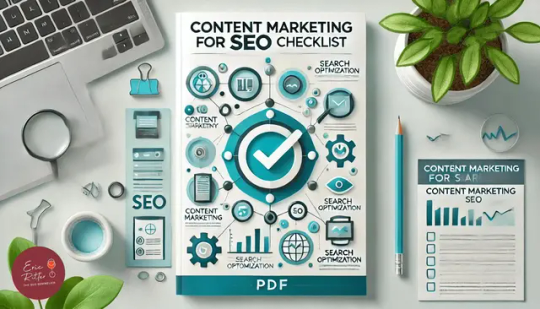
7. Invest in Paid Advertising
While organic reach is still valuable, the rise of paid advertising offers a more direct way to target specific audiences. Platforms like Google Ads, Facebook, and Instagram allow businesses to use highly targeted advertising to reach potential customers based on demographics, interests, and online behaviour.
In 2024, consider experimenting with a mix of search ads, social media ads, and display ads to diversify your strategy. Retargeting campaigns, which focus on users who have already visited your site, are particularly effective at converting potential customers who didn’t purchase their first visit.
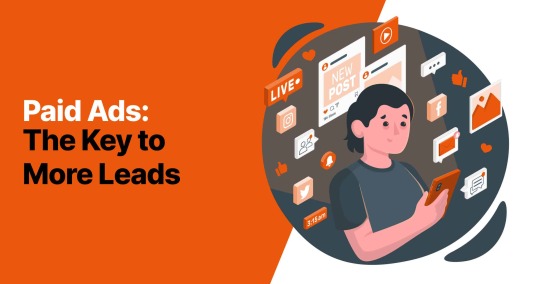
8. Use Email Marketing to Nurture Leads
Email marketing remains one of the most effective ways to nurture leads and maintain customer relationships. In 2024, personalisation will be key to running successful email campaigns. Use behavioural data to send personalised emails based on your audience’s past interactions with your brand. Whether it's a product recommendation, an abandoned cart reminder, or a birthday discount, personalising your emails can significantly improve open and conversion rates.
Additionally, focus on building your email list organically and create engaging, mobile-friendly templates that grab attention. Incorporate dynamic content that adapts to the recipient’s preferences to make your emails more relevant and engaging.
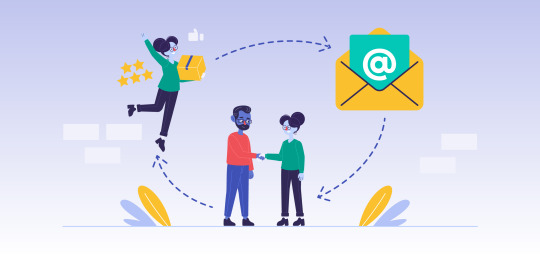
9. Incorporate User-Generated Content (UGC)
User-generated content (UGC) is a powerful form of social proof that can influence purchase decisions. Customers are more likely to trust the opinions of their peers than traditional advertising. Encourage your customers to share their experiences with your products or services on social media, and showcase UGC on your website and marketing channels.
UGC can take the form of reviews, testimonials, photos, and videos from customers. By featuring authentic content from real users, you can build trust with potential customers and foster a sense of community around your brand.
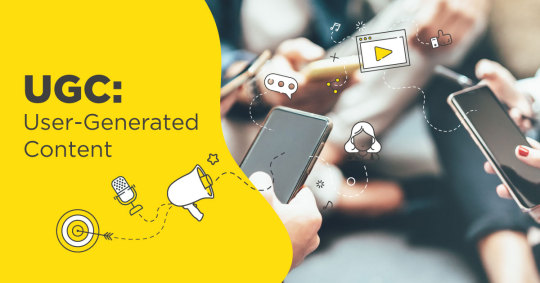
10. Utilise Data Analytics to Drive Decisions
Data analytics is the foundation of a successful digital marketing strategy. By tracking the performance of your campaigns, you can make data-driven decisions that improve your ROI. Tools like Google Analytics, social media insights, and marketing automation platforms can provide valuable information on how your audience interacts with your content, website, and ads.
In 2024, focus on real-time analytics to track user behaviour and adjust your marketing strategies on the fly. Use data to identify trends, test new ideas, and continuously refine your approach to maximise results.

Conclusion
Digital marketing is an ever-changing field, and staying ahead of the trends is essential for business growth. By incorporating these 10 essential digital marketing tips, you’ll be well-prepared to navigate the challenges of 2024 and beyond. From optimising for voice search and embracing AI to mastering video marketing and enhancing your SEO efforts, each of these strategies will help you boost your business and stay ahead of the competition. Start implementing these tips today and watch your business soar to new heights in the digital world!
5 notes
·
View notes
Text
New Business Marketing Tips and Tricks for Success
Starting a new business can be an exhilarating adventure, but it also comes with its fair share of challenges, especially in the competitive landscape of today's marketplace. To stand out and thrive, effective marketing is crucial. Here are four essential marketing tips and tricks to help your new business succeed:
Define Your Target Audience and Create Customer Personas:
One of the first steps in crafting a successful marketing strategy for your new business is to identify and understand your target audience. Who are your ideal customers, and what are their needs, preferences, and pain points? Creating customer personas can help you visualize and humanize your audience, making it easier to tailor your marketing efforts effectively.

Start by conducting market research to gather data about your potential customers. Analyze demographics, psychographics, and behavior patterns to create detailed customer personas. These personas should include information like age, gender, income, interests, and pain points.
Once you have a clear understanding of your target audience, customize your marketing messages and strategies to resonate with them. Craft compelling content, advertisements, and promotions that address their specific needs and desires. By speaking directly to your ideal customers, you'll increase the chances of building meaningful connections and driving conversions.
Leverage the Power of Digital Marketing:
In the digital age, online presence and digital marketing are indispensable for any new business. Here are some essential digital marketing strategies to consider:
a. Build a User-Friendly Website: Your website is often the first point of contact for potential customers. Ensure that it is well-designed, easy to navigate, and mobile-responsive. Optimize it for search engines (SEO) to improve your visibility in search results.
b. Content Marketing: Create valuable and relevant content that educates, entertains, or solves problems for your target audience. Blog posts, videos, infographics, and social media updates can all be part of your content marketing strategy.

c. Social Media Marketing: Identify the social media platforms where your audience is most active and engage with them there. Develop a content calendar and use a mix of organic and paid content to reach a wider audience.
d. Email Marketing: Build and nurture an email list to stay in touch with your customers. Send personalized and relevant content, offers, and updates to keep them engaged and informed.
e. Pay-Per-Click Advertising (PPC): Consider running targeted PPC campaigns on platforms like Google Ads and Facebook Ads to reach potential customers actively searching for your products or services.
Emphasize Customer Relationships and Engagement:
In a competitive market, building and maintaining strong customer relationships is vital. Consider these strategies to enhance customer engagement:
a. Provide Exceptional Customer Service: Respond promptly to inquiries and address customer concerns with care. Happy customers are more likely to become loyal advocates for your brand.
b. Personalization: Use customer data and segmentation to personalize your marketing messages and offers. People appreciate tailored experiences that cater to their unique preferences.

c. Encourage User-Generated Content: Encourage customers to share their experiences with your products or services on social media or review platforms. User-generated content can build trust and credibility.
d. Loyalty Programs: Reward repeat customers with loyalty programs, discounts, or exclusive access to new products or services. Loyalty programs can foster long-term relationships and increase customer retention.
Monitor, Analyze, and Adapt:
Marketing is not a one-size-fits-all endeavor. To continually improve your strategies, track key performance indicators (KPIs) and adapt based on the data:
a. Use Analytics Tools: Employ tools like Google Analytics, social media insights, and email marketing metrics to monitor the performance of your marketing efforts.
b. A/B Testing: Experiment with different marketing approaches and compare their results through A/B testing. This allows you to refine your strategies over time.

c. Stay Informed: Keep up with industry trends, competitors, and evolving customer preferences. Stay open to adjusting your marketing plan as needed.
In conclusion, successful marketing for a new business involves understanding your audience, utilizing digital strategies, fostering customer relationships, and staying adaptable. By implementing these tips and tricks, your new business can navigate the competitive landscape and carve out its own path to success.
#seo#online marketing#digitalmarketing#marketing agency#learn digital marketing#digital marketing service#seo marketing#digital marketing course#digital marketing#seo expert#business success#business marketing#marketing tips
25 notes
·
View notes
Text
Top 10 Shopify Marketing Strategies to Skyrocket Your Sales in 2025"
Shopify is a effective e-trade platform that empowers corporations of all sizes to construct on line shops. However, simply having a shop isn't sufficient; effective advertising is important to attract clients and power sales. This manual will discover key Shopify advertising techniques and strategies that will help you prevail.

"Effective Shopify store promotion methods in 2025"
1. Content Marketing
Blog: Create valuable content that addresses your audience's pain factors, answers their questions, and presents beneficial records.
Examples: Product courses, industry news, behind-the-scenes glimpses, consumer testimonials.
Social Media: Engage together with your target audience on platforms like Instagram, Facebook, Twitter, and TikTok. Share visually attractive content material, run contests and giveaways, and respond right away to feedback and messages.
Video Marketing: Create engaging films like product demos, tutorials, and consumer testimonies. Platforms like YouTube and TikTok are exquisite for video advertising and marketing.
2. Search Engine Optimization (search engine marketing)
On-Page SEO: Optimize your product pages, weblog posts, and website copy with applicable keywords. Use clear and concise product descriptions, exceptional images, and rapid loading instances.
Off-Page search engine marketing: Build splendid one-way links from different authentic websites. Engage in guest blogging, take part in on-line groups, and build relationships with different groups.
Technical SEO: Ensure your internet site is cellular-pleasant, has a stable connection (HTTPS), and is simple for search engines to crawl and index.
Three. Email Marketing
Build an Email List: Offer incentives like discounts or one of a kind content to inspire site visitors to enroll in your e mail list.
Segment Your Audience: Tailor your e-mail campaigns to particular customer segments based on their purchase records, surfing behavior, and demographics.
Automate Your Emails: Use email advertising automation equipment to ship welcome emails, abandoned cart reminders, and post-buy comply with-up messages.
4. Paid Advertising
Google Ads: Run focused ads on Google Search and Google Display Network to attain clients actively searching for products like yours.
Social Media Ads: Utilize centered ads on structures like Facebook, Instagram, and Pinterest to reach specific demographics and hobbies.
Influencer Marketing: Partner with applicable influencers to promote your merchandise to their fans.
Five. Social Proof
Customer Reviews: Display patron opinions and testimonials prominently in your internet site and product pages.
Social Media Mentions: Encourage social media sharing by means of strolling contests and providing incentives.
User-Generated Content: Feature consumer-generated content like snap shots and videos of clients the usage of your merchandise.
6. Sales and Promotions
Discounts and Coupons: Offer discounts, coupons, and special promotions to draw new clients and incentivize repeat purchases.
Flash Sales: Create a sense of urgency via imparting confined-time discounts on choose merchandise.
Loyalty Programs: Reward repeat customers with unique discounts, early get right of entry to to income, and personalized offers.
7. Website Optimization
User Experience (UX): Ensure your internet site is straightforward to navigate, visually attractive, and cell-friendly.
Page Speed: Optimize your website's loading speed to enhance person experience and search engine ratings.
Clear Call-to-Actions (CTAs): Use strong CTAs like "Buy Now," "Add to Cart," and "Learn More" to manual site visitors towards conversions.
Eight. Customer Service
Provide Excellent Support: Offer activate and beneficial customer support via channels like live chat, e-mail, and phone.
Build Relationships: Go the extra mile to construct sturdy relationships along with your customers.
Address Feedback: Actively solicit and respond to client comments to improve your products and services.
Nine. Analytics and Tracking
Track Key Metrics: Monitor key metrics like internet site site visitors, conversion charges, client acquisition cost, and client lifetime fee.
Analyze Data: Use facts analytics tools to pick out areas for development and optimize your advertising campaigns.
A/B Testing: Experiment with exclusive website factors and advertising and marketing campaigns to peer what plays best.
10. Shopify Apps
Boost Sales: Utilize Shopify apps to beautify your advertising efforts, which include apps for e-mail advertising, social media advertising and marketing, and sales automation.
Improve Customer Experience: Implement apps that enhance customer experience, such as stay chat, product pointers, and transport monitoring.
Increase Efficiency: Streamline your commercial enterprise operations with apps for inventory management, order fulfillment, and accounting.
Key Considerations:
Target Audience: Understand your target market's wishes, choices, and on line conduct.
Budget: Determine your advertising budget and allocate finances efficiently throughout exceptional channels.
Consistency: Maintain regular branding and messaging across all advertising channels.
Innovation: Stay updated with the modern day advertising tendencies and technologies.
Shopify Marketing Examples:
Allbirds: Known for its sustainable footwear, Allbirds efficaciously leverages social media marketing, person-generated content, and influencer collaborations to build a sturdy emblem following.
Glossier: Glossier has built a devoted community thru social media engagement, actual logo storytelling, and a focus on purchaser experience.
Gymshark: Gymshark correctly makes use of influencer marketing, health demanding situations, and a strong social media presence to engage its target audience of fitness enthusiasts.
By imposing these techniques and strategies, you may efficiently marketplace your Shopify shop, appeal to clients, and force sales growth. Remember to constantly analyze your effects, adapt your technique based on statistics, and live focused on supplying value on your clients.
Disclaimer: This records is for general understanding and informational functions most effective and does now not constitute monetary, funding, or other professional advice.
I desire this comprehensive guide provides precious insights into Shopify advertising. Feel unfastened to invite if you have any further questions.
2 notes
·
View notes
Text
How to Structure Your Google Ads Campaign for Better ROI

If you’re looking to maximize the return on investment (ROI) from your Google Ads campaigns, structuring your campaigns effectively is crucial. A well-organized campaign ensures that your ads reach the right audience, minimize wasteful spending, and deliver measurable results. In this guide, we’ll outline the key steps to structure your Google Ads campaign for better ROI.
Also, for a deep understanding, consider reading the blog: The definitive guide on maximizing ROI with Google ads.
1. Define Clear Goals and Objectives
Before diving into campaign setup, establish clear goals for what you want to achieve. Are you focusing on brand awareness, lead generation, or eCommerce sales? Defining your objectives helps you:
Choose the right campaign type (e.g., Search, Display, Shopping, or Video).
Set measurable KPIs like cost-per-click (CPC), conversion rate, or return on ad spend (ROAS).
2. Conduct Comprehensive Keyword Research
Keywords form the foundation of any Google Ads campaign. Use tools like Google’s Keyword Planner or SEMrush to identify relevant keywords that align with your goals. Segment these keywords into:
High-intent keywords (e.g., “buy running shoes” for sales campaigns).
Informational keywords for awareness campaigns.
Group your keywords logically to make ad groups tightly focused, which improves your Quality Score and ad relevance.
3. Create Well-Structured Campaigns and Ad Groups
Organizing your campaigns and ad groups is critical for precise targeting and budget allocation. Follow these principles:
Campaign-Level Structure: Organize campaigns by objectives, product categories, or services.
Ad Group-Level Structure: Group related keywords and tailor your ads for each group.
For example, if you’re advertising running shoes, create separate ad groups for men’s, women’s, and kids’ running shoes.
4. Optimize Your Ad Copy and Assets
Your ads should be compelling, clear, and relevant to the audience’s intent. Incorporate the following best practices:
Use action-oriented language (e.g., “Shop Now,” “Get a Free Quote”).
Highlight your unique selling propositions (USPs).
Include keywords from your ad group in the ad copy.
Leverage ad extensions like sitelinks, callouts, and structured snippets to provide additional information and improve click-through rates (CTR).
5. Leverage Audience Targeting
Audience targeting refines your reach to users most likely to convert. Use Google’s audience options to target:
Affinity Audiences: Broader audiences based on interests and habits.
In-Market Audiences: Users actively searching for products or services.
Remarketing Lists: Re-engage past visitors who showed interest in your offerings.
6. Monitor and Optimize Bidding Strategies
Choosing the right bidding strategy significantly impacts ROI. Popular options include:
Manual CPC for precise control.
Target ROAS for automated ROI-focused bidding.
Maximize Conversions to drive volume while staying within your budget.
Continuously analyze performance and adjust bids based on data.
7. Refine Landing Pages
A high-quality landing page is essential for converting ad clicks into actions. Ensure that your landing pages:
Are highly relevant to the ad copy.
Load quickly and are mobile-friendly.
Feature clear calls-to-action (CTAs) and minimal distractions.
Pro Tip: Conduct A/B testing to find the most effective designs and CTAs.
8. Regularly Analyze and Optimize Campaign Performance
Ongoing optimization is the key to better ROI. Use Google Ads reports to:
Identify high-performing and underperforming keywords.
Adjust budget allocations to prioritize successful campaigns.
Experiment with new ad creatives and targeting options.
Conclusion
Effectively structuring your Google Ads campaign is the foundation for achieving better ROI. By defining clear goals, organizing campaigns logically, refining ad copy, and leveraging audience targeting, you can create campaigns that consistently perform. Don’t forget to regularly analyze and optimize your strategies to stay ahead of the competition.
For expert assistance with Google Ads management, consider reaching out to Forerunner Marketing’s Google Advertising Services. Their team specializes in helping businesses maximize their advertising potential through tailored strategies and continuous optimization.
#Google Ads#Google Ads Campaign#ROI#Digital Advertising#Keyword Research#Ad Copy#Campaign Optimization#Audience Targeting#PPC#Pay-Per-Click Advertising#Bidding Strategies#Landing Page Optimization#Google Ads Management#Online Marketing#Conversion Rate Optimization
2 notes
·
View notes
Text
The Exactly Digital Marketing
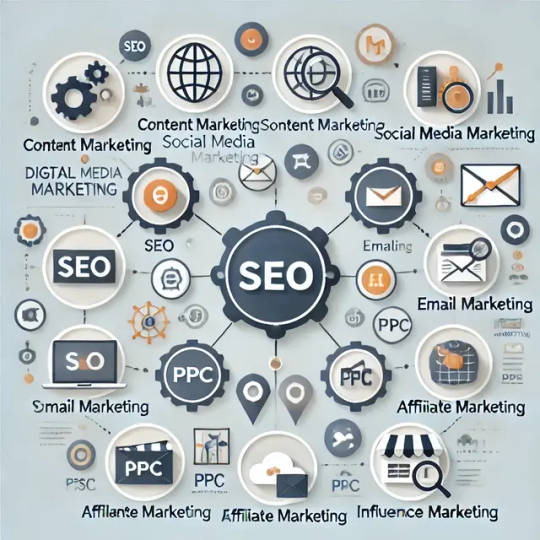
Digital marketing is a comprehensive approach to promoting products, services, or brands using digital platforms, technologies, and strategies. Unlike traditional marketing methods, which rely on mediums like print, radio, and television, digital marketing leverages the internet and electronic devices to reach and engage audiences. It offers a more targeted, measurable, and interactive way to connect with potential customers, making it highly adaptable to audience preferences and behavior.
Key Components of Digital Marketing
Search Engine Optimization (SEO): SEO focuses on improving a website’s visibility in search engine results to drive organic (non-paid) traffic. This involves optimizing on-page elements, creating high-quality content, and building backlinks, making the website more attractive to search engines like Google and Bing.
Content Marketing: Content marketing involves creating and sharing valuable, relevant content to attract and engage a target audience. This can include blogs, videos, infographics, eBooks, and case studies, all designed to educate, inform, and entertain the audience while building brand authority.
Social Media Marketing (SMM): SMM promotes a brand or product through social media channels like Facebook, Instagram, Twitter, LinkedIn, and TikTok. This strategy involves creating and sharing content tailored to each platform, engaging with followers, and running paid ads to reach specific demographics.
Email Marketing: Email marketing is a direct form of communication with customers and prospects, often used to share promotions, updates, and personalized content. By segmenting audiences and automating emails, businesses can nurture leads and maintain customer relationships effectively.
Pay-Per-Click (PPC) Advertising: PPC advertising involves running paid ads on search engines, social media, and other platforms, where advertisers only pay when users click on their ads. This method provides quick visibility and traffic, targeting specific keywords, demographics, and user interests.
Affiliate Marketing: This is a performance-based marketing strategy where businesses partner with affiliates (individuals or other companies) who promote their products in exchange for a commission on sales. It’s a cost-effective way to expand reach and drive conversions.
Influencer Marketing: By collaborating with influencers who have large followings on social media, businesses can reach highly targeted audiences through trusted voices. Influencer marketing is especially popular for product promotions, brand awareness, and social proof.
Why Digital Marketing Matters
Digital marketing is critical for businesses today because it allows them to reach audiences where they spend the majority of their time—online. It offers precise targeting, allowing businesses to segment audiences based on factors like age, location, interests, and online behavior. The ability to track and measure campaigns in real time enables marketers to make data-driven decisions, optimize strategies, and achieve higher return on investment (ROI) than many traditional methods. Digital marketing also fosters direct interaction and engagement with audiences, which helps build stronger customer relationships and brand loyalty.
Benefits of Digital Marketing
Cost-Effective: Compared to traditional marketing, digital marketing often requires lower budgets and provides flexible ad spending options.
Global Reach: Digital marketing can reach audiences worldwide, breaking down geographical barriers.
Real-Time Analytics: Marketers can measure the effectiveness of campaigns in real time, enabling quick adjustments and improved results.
Personalization: With digital tools, businesses can tailor messages to individual users based on their preferences, purchase history, and online behavior.
High Engagement: Digital marketing fosters interactive engagement through social media, email, and other online platforms, enhancing brand loyalty.
In summary, digital marketing encompasses a broad range of online strategies and tactics that collectively help businesses build brand awareness, engage audiences, and drive conversions in a highly measurable and targeted way. It is now an essential part of modern business growth, adapting constantly to evolving technology and user behavior.
#digitalmarketing#marketing#socialmediamarketing#socialmedia#seo#business#branding#onlinemarketing#marketingdigital#digitalmarketingagency#contentmarketing#marketingstrategy#entrepreneur#marketingtips#instagram#advertising#smallbusiness#webdesign#graphicdesign#digital#digitalmarketingtips#design#marketingagency#website#onlinebusiness#ecommerce#webdevelopment#success#startup#emailmarketing
4 notes
·
View notes
Text
What Is Paid Media Marketing? An Introduction for Beginners

In the fast-paced digital landscape, businesses are constantly seeking effective strategies to enhance their online presence and reach their target audience. Paid media marketing has emerged as a powerful tool to achieve these goals. This comprehensive introduction to paid media marketing will help beginners understand its fundamental concepts, benefits, and how to implement it effectively within their digital marketing strategy.
Understanding Paid Media Marketing
Paid media marketing refers to any form of digital advertising where businesses pay to have their content displayed on various platforms. This can include pay-per-click (PPC) advertising, social media ads, display ads, and more. Unlike organic marketing efforts, paid media provides immediate visibility and reach, allowing businesses to target specific audiences with precision.
Key Components of Paid Media Marketing
1. Pay-Per-Click (PPC) Advertising
Among paid media, PPC advertising is one of the most often used types. Advertisers pay a charge under this arrangement for each click on their advertisement. It is primarily used on search engines like Google and Bing. PPC ads appear at the top of search engine results pages (SERPs), providing instant visibility.
Benefits of PPC:
Immediate Results: Unlike SEO, which takes time to build, PPC can drive traffic to your website instantly.
Targeted Advertising:PC enables accurate targeting according to geography, demographics, keywords, and other factors.
Cost Control: Advertisers can set budgets and only pay for actual clicks, making it cost-effective.
2. Social Media Advertising
Social media ads are another critical component of paid media marketing. Platforms like Facebook, Instagram, LinkedIn, and Twitter offer robust advertising options, allowing businesses to target users based on their interests, behaviors, and demographics.
Benefits of Social Media Ads:
Extensive Reach: Social media platforms have billions of active users, offering a vast audience for your ads.
Engagement: Social media ads can be interactive, encouraging users to engage through likes, shares, comments, and clicks.
Advanced Targeting: Detailed targeting options enable advertisers to reach specific segments of their audience effectively.
3. Display Advertising
Display ads are visual advertisements that appear on websites within the Google Display Network and other ad networks. They can be in the form of banners, images, or videos and are designed to attract attention and drive traffic to the advertiser's site.
Benefits of Display Ads:
Visual Appeal: Display ads can be highly creative and visually engaging, capturing users' attention effectively.
Retargeting Opportunities: Display ads can be used for retargeting campaigns, reaching users who have previously visited your website.
Brand Awareness: They are excellent for building brand awareness and keeping your brand top-of-mind among potential customers.
Implementing Paid Media Marketing
To effectively implement paid media marketing, it’s essential to understand the key steps involved:
1. Define Your Goals
Start by defining clear objectives for your paid media campaigns. Whether you aim to increase website traffic, generate leads, or boost sales, having specific goals will guide your strategy and help measure success.
2. Choose the Right Platforms
Select the platforms that align best with your target audience and business goals. For example, if you’re targeting professionals, LinkedIn might be more effective, whereas Instagram could be better for reaching younger demographics.
3. Conduct Keyword Research
For PPC campaigns, thorough keyword research is crucial. Identify the keywords your target audience is searching for and bid on those that are most relevant to your products or services.
4. Create Compelling Ad Content
Create compelling and pertinent advertising content that appeals to your target market. High-quality visuals, compelling copy, and a clear call to action (CTA) are essential components of successful ads.
5. Set Budgets and Bids
Determine your advertising budget and set appropriate bids for your ads. Consider the cost-per-click (CPC) or cost-per-impression (CPM) and ensure you’re getting the most value for your investment.
6. Monitor and Optimize
Keep a close eye on your sponsored media initiatives' results. Use analytics tools to track key metrics such as click-through rates (CTR), conversion rates, and return on investment (ROI). Based on these insights, optimize your campaigns for better performance.
Benefits of Paid Media Marketing
1. Enhanced Visibility
Paid media provides immediate visibility for your brand, placing your ads in front of a broad audience. This is especially beneficial for new businesses looking to establish an online presence quickly.
2. Targeted Reach
Paid media allows for precise targeting, ensuring your ads are seen by the right people. Better conversion rates and increased engagement rates follow from this.
3. Measurable Results
With paid media, you can track and measure the performance of your campaigns in real-time. This data-driven approach enables you to make informed decisions and continuously improve your strategy.
4. Cost-Effective
Paid media can be highly cost-effective, especially with models like PPC, where you only pay for actual clicks. With careful budget management, you can achieve significant results without overspending.
Conclusion
Paid media marketing is a powerful tool that can significantly enhance your digital marketing efforts. By understanding its components, implementing it strategically, and continuously optimizing your campaigns, you can achieve your business goals effectively. Partnering with a reputable PPC company and Digital Marketing services provider like Flexsin can help you navigate the complexities of paid media and maximize your return on investment. Embrace the power of paid media marketing and watch your business thrive in the digital landscape.
2 notes
·
View notes
Text
Page Speed Optimization: Why It’s Critical for Conversions and SEO

In today’s fast-paced digital environment, page-speed-optimization-for-seo-and-conversions is not just an added benefit but a crucial necessity for any business striving to thrive online. A website’s speed has a direct impact on how users perceive your brand. Slow load times can frustrate visitors, leading to higher bounce rates and missed opportunities for engagement. Research shows that a one-second delay in page load time can cause a significant drop in conversions, as customers are less likely to complete actions like making a purchase or filling out a form. This makes page-speed-optimization-for-seo-and-conversions critical for maintaining a seamless user experience and maximizing your ROI.
From an SEO perspective, Google’s ranking algorithms prioritize websites that load quickly, making page-speed-optimization-for-seo-and-conversions essential for improving search engine rankings. A slow website can push you down the search results, making it difficult for your target audience to find you. Moreover, with Google’s emphasis on mobile-first indexing, optimizing for speed across all devices—especially smartphones and tablets—becomes even more critical. Websites that load quickly on mobile not only rank higher but also cater to the growing segment of users who browse on the go.
Implementing page-speed-optimization-for-seo-and-conversions involves multiple technical adjustments, including compressing images, minifying CSS and JavaScript, leveraging browser caching, and using Content Delivery Networks (CDNs). These improvements reduce server response times, streamline code, and eliminate unnecessary elements that can slow down your site. Faster websites lead to more satisfied users, which in turn boosts your credibility and increases the likelihood of repeat visits. Additionally, a well-optimized site reduces the strain on server resources, lowering maintenance costs and improving site reliability.
In essence, investing in page-speed-optimization-for-seo-and-conversions is a long-term strategy that not only enhances user satisfaction but also strengthens your overall digital presence. Whether you are looking to improve your search visibility, attract more organic traffic, or convert more visitors into customers, focusing on page speed can provide the competitive edge your business needs. At Webpino Softwares, we specialize in implementing effective page speed optimization techniques that align with your business goals, helping you deliver faster, more engaging, and conversion-friendly websites that stand out in a crowded digital marketplace.
2 notes
·
View notes
Text
Unlocking the Power of Digital Marketing in 2024: Key Strategies for Success In today's fast-evolving digital landscape, businesses need a strong online presence to stay competitive. Digital marketing has emerged as the go-to strategy for brands looking to connect with their target audience, boost sales, and build lasting relationships. At Digital Marketing Lab, we explore the latest trends, strategies, and tools that can transform your business into a digital powerhouse.
Why Digital Marketing Matters More Than Ever With over 5 billion people using the internet worldwide, having a digital strategy is no longer optional. Consumers increasingly rely on online platforms to discover, evaluate, and purchase products or services. This growing reliance on digital channels offers businesses endless opportunities to engage and convert potential customers.
In 2024, digital marketing continues to evolve, with a focus on personalization, automation, and omnichannel experiences. Whether you're a small business or a large enterprise, an effective digital marketing strategy can help you reach a wider audience, improve customer engagement, and drive growth.
Key Digital Marketing Strategies for 2024 To stay ahead of the curve, here are the top digital marketing strategies to implement in 2024:
Content Marketing Content remains king, but the way businesses approach it is changing. High-quality, value-driven content that speaks directly to your audience’s needs will drive better engagement. This includes blog posts, videos, infographics, podcasts, and more. Interactive content like polls, quizzes, and surveys is also gaining traction as it encourages user participation.
Search Engine Optimization (SEO) SEO continues to be a critical pillar of digital marketing. Google and other search engines are constantly updating their algorithms to prioritize websites with the best user experience. In 2024, focus on core web vitals, mobile-first indexing, and voice search optimization to ensure your site ranks well. Local SEO is also becoming more important as consumers search for businesses “near me.”
Social Media Marketing Social media platforms such as Instagram, Facebook, LinkedIn, and TikTok remain powerful tools for brand promotion. Leveraging influencer marketing, user-generated content, and short-form videos can enhance your brand’s visibility. In 2024, we expect more brands to use AI-powered social listening tools to better understand their audience and respond to trends in real time.
Email Marketing and Personalization Email marketing is far from obsolete—in fact, it’s more effective than ever when combined with personalization. Consumers expect brands to deliver relevant, personalized messages that cater to their individual preferences. Using AI tools to segment audiences and create automated email flows based on user behavior can help boost engagement and conversions.
Pay-Per-Click Advertising (PPC) PPC remains a go-to strategy for instant visibility. Platforms like Google Ads, Facebook Ads, and Instagram Ads offer highly targeted campaigns that reach specific audiences. In 2024, AI-driven campaign management tools will take PPC to the next level, optimizing budgets, targeting, and ad placements for maximum ROI.
Video Marketing Video is rapidly becoming the preferred medium for online users, making it an essential part of any digital marketing strategy. Whether it's short, engaging TikToks, in-depth YouTube tutorials, or live streams on Instagram, businesses need to incorporate video content to connect with their audiences. In 2024, shoppable videos and interactive livestreams will dominate the video marketing scene.
AI and Automation Artificial intelligence and automation tools are transforming the digital marketing landscape. From chatbots that provide instant customer service to AI-driven content creation, businesses are leveraging technology to improve efficiency and customer experience. Tools like predictive analytics and machine learning also enable marketers to make data-driven decisions, enhancing campaign success rates.
Staying Ahead in the Digital Marketing Game The digital marketing world is constantly evolving, but the fundamentals remain the same: know your audience, provide value, and adapt to new trends and technologies. Whether you're looking to revamp your existing strategy or build a new one from the ground up, keeping an eye on these key trends will ensure your brand stays competitive in 2024.
At Digital Marketing Lab, we're committed to helping businesses navigate the complexities of digital marketing. We provide actionable insights, tips, and resources to help you grow your online presence and achieve your business goals.
Know More: https://digitalmarketinglab.in/
2 notes
·
View notes
Text
10 Game-Changing AI Tools Every Affiliate Marketer Needs to Dominate 2024

Affiliate marketing is evolving rapidly, and in 2024, AI tools are playing a pivotal role in shaping the industry. These tools are not just about efficiency—they’re about driving conversions, optimizing strategies, and significantly increasing your revenue.
Here are 10 game-changing AI tools that every affiliate marketer needs to dominate the market this year.
Unlock Your Affiliate Marketing Success!
Ready to boost your income? Grab my guide, "Affiliate Marketing Secret Formula," and discover the strategies top marketers use to dominate their niches. Learn how to find high-converting offers, leverage AI tools, and build a profitable affiliate business.
Get your copy now and start your journey to financial freedom
1. Seowriting.ai
Seowriting.ai is an AI-powered content creation tool designed to help affiliate marketers produce SEO-optimized content quickly and effectively. It streamlines the process of keyword research, content structuring, and readability enhancement, ensuring that your content ranks high and engages readers.
Why It’s a Game-Changer:
Automates keyword research and content optimization
Enhances readability and engagement
Improves content ranking potential
2. Jasper (Formerly Jarvis)
Jasper is an AI-powered writing assistant that aids in creating high-quality content tailored to your audience. It’s particularly useful for generating blog posts, product descriptions, and email campaigns that are both engaging and SEO-friendly.
Why It’s a Game-Changer:
Saves time on content creation
Ensures SEO-friendly copy
Customizable for different niches
3. VidIQ

VidIQ is an essential tool for affiliate marketers who leverage video content. It offers data-driven insights to optimize your YouTube videos, helping you rank higher and attract more viewers. VidIQ also provides competitive analysis and performance tracking to fine-tune your video marketing strategy.
Why It’s a Game-Changer:
Optimizes YouTube videos for better visibility
Provides competitive analysis
Tracks video performance and offers insights
4. Surfer SEO
Surfer SEO combines AI with data-driven insights to optimize your content for search engines. It provides real-time recommendations to help you out-rank competitors by improving on-page SEO.
Why It’s a Game-Changer:
Enhances on-page SEO
Provides actionable insights
Helps in outperforming competitors
Unlock Your Affiliate Marketing Success!
Ready to boost your income? Grab my guide, "Affiliate Marketing Secret Formula," and discover the strategies top marketers use to dominate their niches. Learn how to find high-converting offers, leverage AI tools, and build a profitable affiliate business.
Get your copy now and start your journey to financial freedom
5. ConvertKit
ConvertKit is an AI-driven email marketing platform that automates your campaigns, segments your audience, and personalizes your messaging to increase engagement and conversions.
Why It’s a Game-Changer:
Automates email sequences
Personalizes marketing efforts
Increases conversion rates
6. AdCreative.ai
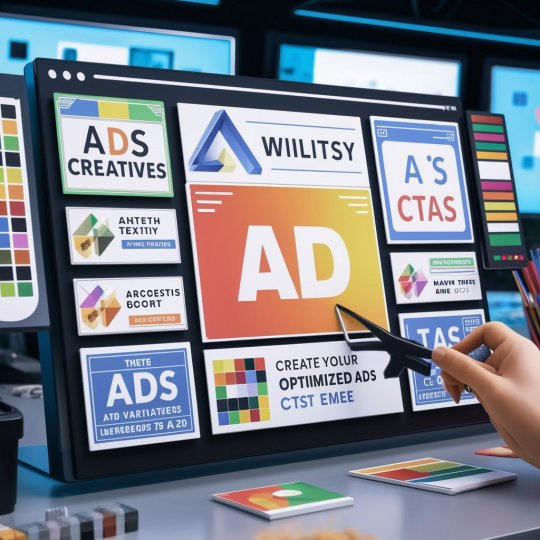
AdCreative.ai uses AI to generate high-converting ad creatives for your affiliate campaigns. It’s perfect for marketers running ads on platforms like Facebook or Google, ensuring your creatives are optimized for performance.
Why It’s a Game-Changer:
Generates high-quality ad creatives
Boosts click-through rates (CTR)
Saves time on ad design
7. HubSpot CRM
HubSpot CRM uses AI to provide a comprehensive view of your customer interactions. It helps affiliate marketers track leads, manage relationships, and automate sales tasks, streamlining marketing efforts.
Why It’s a Game-Changer:
Automates customer relationship management
Improves lead tracking
Streamlines sales processes
8. Grammarly
Grammarly enhances your writing’s clarity, engagement, and readability. For affiliate marketers, this means producing polished, professional content that connects with your audience.
Why It’s a Game-Changer:
Improves content quality
Ensures clear and engaging copy
Enhances readability for better user experience
9. Ahrefs

Ahrefs is a powerful SEO tool that provides in-depth data on keyword rankings, backlinks, and competitor analysis. It’s indispensable for affiliate marketers looking to identify profitable keywords and outmaneuver the competition.
Why It’s a Game-Changer:
In-depth keyword research
Competitor analysis
Backlink tracking and analysis
10. Zapier
Zapier uses AI to automate workflows between different apps, allowing you to streamline repetitive tasks. It’s particularly useful for integrating multiple tools and automating your affiliate marketing processes.
Why It’s a Game-Changer:
Automates workflows
Integrates with hundreds of apps
Saves time on repetitive tasks
How AI Tools Are Revolutionizing Affiliate Marketing
AI tools in affiliate marketing are transforming the way we work by automating tasks, optimizing content, and enhancing customer interactions. The key to staying ahead in 2024 is to leverage these tools effectively.
Key Benefits of Using AI Tools:
Increased Efficiency: Automating repetitive tasks frees up time for strategic planning.
Enhanced Content Creation: AI-driven tools ensure your content is optimized and engaging.
Better Decision-Making: Data-driven insights help you make informed decisions that drive results.
Improved Customer Engagement: AI tools like chatbots and personalized email marketing increase customer satisfaction and loyalty.
Unlock Your Affiliate Marketing Success!
Ready to boost your income? Grab my guide, "Affiliate Marketing Secret Formula," and discover the strategies top marketers use to dominate their niches. Learn how to find high-converting offers, leverage AI tools, and build a profitable affiliate business.
Get your copy now and start your journey to financial freedom
Conclusion
The adoption of AI tools will be critical for affiliate marketers looking to succeed in 2024. The tools listed above, including Seowriting.ai and VidIQ, offer powerful features that can significantly enhance your marketing efforts. By integrating these technologies into your strategy, you can boost your efficiency, improve your content, and ultimately, dominate the affiliate marketing space this year.
Final Tip:
Start by integrating the AI tools that align most closely with your current needs. Gradually incorporate more tools as you grow, and continuously measure their effectiveness to optimize your strategy.
#affiliate marketing guide#affiliate marketing#affiliate promotion#affiliate products#passive income#ai#ai marketing tools#ai marketing platform
3 notes
·
View notes
Text
Top Quora Marketing Tactics for Startups and Small Businesses
1. Understanding Quora:
Target Audience: Identify your perfect consumer on Quora. What are their pursuits? What questions are they asking?
Content Strategy: Develop a content material strategy that aligns together with your business desires. What cost can you provide to the Quora community?
Competitor Analysis: See how your competition are the use of Quora. What are they doing well? What regions can you enhance upon?
2. Building Your Quora Profile:
Complete Profile: Fill out your profile completely, together with your call, task name, corporation, and a pro headshot.
Connect Social Media: Link your social media profiles on your Quora account to boom visibility.
Write a Compelling Bio: Briefly describe your knowledge and what you may offer to the Quora network.
3. Finding the Right Questions:
Use the Quora Search Bar: Search for applicable key phrases and topics associated with your commercial enterprise.
Explore Related Questions: When viewing a question, take a look at the "Related Questions" segment for greater opportunities to engage.
Follow Topics: Follow subjects relevant to your industry to live updated on the trendy discussions.
Follow People: Follow enterprise specialists and influencers to learn from their insights and have interaction with their content.
Four. Answering Questions Effectively:
Provide Value: Offer insightful and informative answers that address the question directly.
Be Authentic and Engaging: Write in a pleasant and conversational tone.
Use High-Quality Images and Videos: Visual content can make your solutions more appealing and engaging.
Include a Call to Action (Optional): If suitable, gently manual readers in your website or different relevant sources.
Five. Promoting Your Quora Content:
Share Your Answers: Share your nice answers in your social media channels.
Embed Answers on Your Website: Embed your most popular answers in your website or weblog to exhibit your know-how.
Create a Quora Digest: Compile your first-rate answers right into a downloadable PDF or e-book.
Engage with Other Users: Upvote and comment on other customers' answers to construct relationships and increase your visibility.
6. Tracking Your Results:
Monitor Your Quora Analytics: Track your solution perspectives, upvotes, and comments to measure your impact.
Use Google Analytics: Track website visitors from Quora to peer how your answers are using results.
Experiment and Iterate: Continuously experiment with exceptional tactics and refine your method based totally to your effects.
7. Avoiding Common Pitfalls:
Don't Spam: Avoid self-merchandising and spamming the platform with beside the point answers.
Don't Be Salesy: Focus on supplying value to the community, now not just selling your products or services.
Don't Ignore Negative Feedback: Constructive complaint can help you enhance.
Don't Plagiarize: Always credit your resources and avoid copying content from other websites.
Eight. Advanced Quora Marketing Techniques:
Quora Spaces: Create or be a part of Spaces associated with your industry to interact with a specific network.
Quora Ads: Run focused ads to promote your commercial enterprise or content material to a selected target market on Quora.
Partner with Influencers: Collaborate with influential Quora users to attain a much broader audience.
Host Quora AMAs: Host "Ask Me Anything" sessions to connect with your audience and solution their questions immediately.
Nine. Examples of Successful Quora Marketing:
HubSpot: HubSpot continuously presents treasured insights and resources on inbound marketing and income on Quora.
Neil Patel: Neil Patel, a famous digital advertising and marketing professional, actively solutions questions and shares his expertise on Quora.
SEMrush: SEMrush uses Quora to educate users approximately search engine optimization, PPC, and different digital advertising topics.
10. Key Takeaways:
Be affected person and consistent: Building a strong Quora presence takes time and effort.
Focus on imparting cost: Offer insightful and informative solutions that deal with the question immediately.
Be authentic and attractive: Write in a pleasant and conversational tone.
Track your consequences: Monitor your development and refine your method based totally in your effects.

2 notes
·
View notes